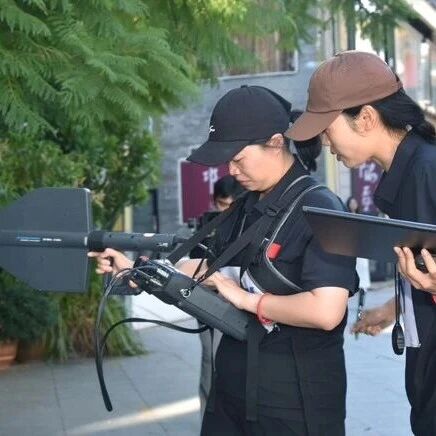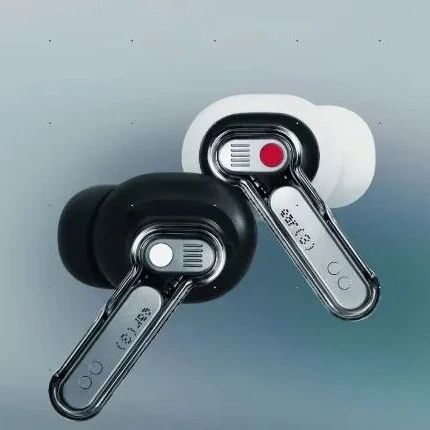
点击蓝字 关注我们

欢迎各位专家学者在公众号平台报道最新研究工作,荐稿请联系小编Robert(微信ID:BrainX007);或将稿件发送至lgl010@vip.163.com。
英文标题:Wireless Electrotactile System with Hydrogel-Based Electrodes for Conformal Tactile Interaction

成果简介
本研究通过整合贴合皮肤的电极与柔性电路,展示了一种无线表皮电触觉接口,解决了现有触觉技术因机械失配和系统集成难题造成的局限性。该电触觉系统通过优化电极-皮肤模量匹配及改进电化学界面,实现了低刺激阈值(<20 V),可在指腹区域产生无痛触觉感知。毫米级架构采用多路复用刺激通道,空间映射至ISO标准盲文配置,人体试验中实现91.90%的字母数字识别准确率。此外,该系统展现出运动控制能力,可协助视障用户在复杂环境中导航,显著提升其日常活动中的自主性与交互能力。
研究亮点
皮肤贴合水凝胶电极:使用导电聚合物水凝胶制备电极,其杨氏模量(560 kPa)和拉伸应变(≈60%)与人体皮肤高度匹配,实现了机械顺应性,避免运动中的脱落或不适。
低阻抗界面与高效电荷传递:电极-皮肤界面阻抗低至447 Ω(20 kHz),远低于商用Ag/AgCl电极(21.53 kΩ),使得在低电压下即可激活神经末梢,避免疼痛感。
无线、柔性、可编程控制系统:集成蓝牙低功耗(BLE) 通信、多层柔性印刷电路板(FPCB)、升压转换器和逆变电路,实现可编程双相交流刺激(20 kHz载波频率)。支持多通道独立控制,可映射ISO标准盲文点阵,实现高精度空间触觉反馈。
图文解析

Fig.1. Design of the wireless electrotactile system. a) Schematic illustrating cutaneous current delivery through conformal hydrogel electrodes, activating free nerve endings to evoke action potentials to the somatosensory cortex. b) Images showing the flexible printed circuit assembly, with insets (i–v) detailing critical interfaces: i) gold-finger/hydrogel interconnect; ii) relative cathodic output terminal; iii) dedicated pads for programming; iv) relative anodic output terminal; v) lithium-polymer battery connector. Scale bar: 10 mm and 1 mm. c) Layer-resolved decomposition of the epidermal electrode stack, comprising PDMS substrate (100 μm thick), conductive hydrogel matrix (80 μm thick, 40 S m−1 conductivity), and perforated encapsulation layer aligned to stimulation nodes.

Fig.2. Mechanical and electrical characterization of conducting polymer hydrogel epidermal electrodes. a) Optical image of the skin-conformal electrode demonstrating mechanical compliance. Scale bar: 10 mm. b) Uniaxial tensile stress-strain profile quantifying elastic modulus and fracture strain. c) Comparative viscoelastic parameters at equilibrium swelling state in PBS, including Young’s modulus (560 kPa) and elongation (59.2%, n = 3). d) Conductivity stability during 1000 cyclic stretching at 30% strain (1 Hz, n = 3) in PBS buffer. e) Epidermal interfacial impedance (447 Ω at 20 kHz) versus commercial Ag/AgCl electrodes (21.53 kΩ). f) Electrochemical stability under ambient storage (20 kHz impedance: from 44.78 Ω to 51.9 Ω over 4 weeks, n = 3). g) Comparative chart showing the impedance and Young’s modulus of recently reported epidermal electrodes based on conducting polymer hydrogel. h,i) Anchorage-dependent adhesion integrity under prolonged hydration (12 h in PBS) and mechanical loading (70 % strain), with covalent bonding preventing delamination. Scale bar: 10 mm. j) Lap shear test schematic for quantifying interfacial adhesion strength. k) Summary of interfacial adhesion stability of conducting polymer hydrogel with PDMS substrate during 1000 stretching cycles (50% strain, 1 Hz, n = 3), confirming durable bioelectronic integration.

Fig.3. System architecture and electrotactile perception profiling. a) Brief block diagram of the BLE-enabled wireless electrotactile system, integrating signal modulation, digital isolation, power regulation (3.3 V to 28 V boost conversion), voltage amplification, and inverter-driven biphasic AC output (20 kHz frequency) for epidermal nerve activation via the hydrogel electrodes. b) Layer-resolved FPCB architecture: The BLE SoC, serving as the central controller, is located on the top layer along with key functional components such as switch, antenna, isolation units, operational amplifiers (OP-AMP), boost converters, and inverter chips. c) Linear voltage modulation (R2 = 0.9998) under PWM control, validating programmable amplitude tuning across 0 V to 28 V stimulation range. d) Representative output stimulation waveform with a 50 % duty cycle. e) Logistic regression-derived perceptual frequency thresholds (1 kHz to 20 kHz) demonstrating inverse voltage-dependency (2 mm-diameter electrodes, n = 10). f) Wrist-mounted FPCB prototype encapsulated in 100 μm PDMS, maintaining mechanical compliance during full hand articulation. g) Electrode size-dependent perceptual thresholds, validating inverse proportionality between contact area and activation voltage (n = 10). Scale bar: 10 mm.

Fig.4. Braille-encoded wireless electrotactile neuromodulation systems. a) Logic architecture of the BLE-enabled control platform, where alphanumeric inputs are encoded into six-bit binary codes (e.g., “100000” for “a”) and mapped to GPO pins via FIFO logic-driven electrode activation, with PWM modulation enabling amplitude tuning. b) Temporal logic-state visualization for the string “Blue,” demonstrating sequential uppercase indicator (1 s duration) followed by Braille characters (1 s intervals) through LED-mirrored stimulation patterns. c) Spatial acuity validation via blindfolded localization trials (n = 60), achieving 98.06% accuracy in single-site stimulation identification using the wrist-mounted wireless electrotactile system. Scale bar: 10 mm. d) Schematic illustration of electrotactile stimulation and perceptual response mapping on the right index finger, showing correct recognition of the character “k” and classification of stimulation sites as hits, false alarms, or correct rejections. e,f) Confusion matrices evaluating six-dot Braille cell discrimination (98.06% accuracy) and character and symbol recognition (91.90% accuracy), confirming context-aware tactile resolution for assistive communication (where UC denotes the uppercase symbol and Dig. represents the digit symbol).

Fig.5. Braille-encoded electrotactile navigation system. a) Spatiotemporal mapping of directional commands (“forward/left/right/stop”) to distinct 3×2 Braille electrode activation patterns. b) Logic-state visualization of biphasic stimulation sequences (20 kHz carrier) via LED-mirrored outputs, validating temporal encoding fidelity across 1-second command duration. c) Confusion matrix quantifying 98.5% classification accuracy (n = 60 trials) for directional perception. d) Schematic diagram of the walking route, with annotated key positions where movement commands were delivered. e) Navigation experiment demonstrating high obstacle avoidance accuracy during guided turns, with participants maintaining stable walking speed under PDMS-encapsulated wrist-worn stimulation (3 mm thick, 96 × 42 mm2 footprint).
研究结论
本文建立了一套无线电触觉系统,该系统融合了贴合皮肤的水凝胶界面、柔性电路和可编程转换逻辑,从而实现具有时空精度的实时体感反馈。该系统借鉴盲文启发的二进制编码原理,实现双重功能:通过空间映射的3×2电触觉矩阵进行字母数字识别,并借助动态刺激序列实现导航控制。同时保持机械柔顺性与低界面阻抗(20kHz时为447Ω),确保在20V以下安全运行。在视障用户中实现91.90%的字符识别准确率和98.06%的方向指令辨别率,彰显其作为可穿戴辅助接口的潜力,可弥合盲文识读与视觉受限环境导航中的触觉沟通鸿沟。这些表皮神经刺激技术的突破为新一代神经假体接口奠定基础,未来通过整合多模态感知与自适应闭环算法,有望提升增强现实及机器人遥操作系统中的感知保真度。
免责声明:原创仅代表原创编译,水平有限,仅供学术交流,如有侵权,请联系删除,文献解读如有疏漏之处,我们深表歉意。


公众号丨智能传感与脑机接口







![倒计时!TI免费培训:ADAS|AIDSP|精密电机控制|多协议无线等[上海 杭州 北京 西安]](https://xtechcon-static.oss-cn-chengdu.aliyuncs.com/xtimes/xtimes/images/2025-10-20/68f59a5a76d22.jpeg)



